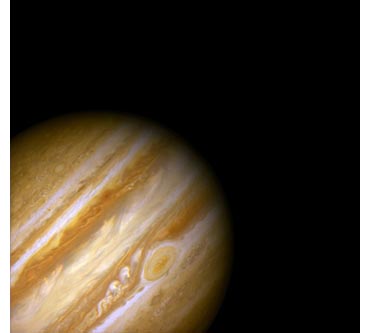13 April Fool's Jokes for the Atmospheric, Space, and Weather Crowd
- By AMS Staff
- Apr 27, 2021
April Fool's jokes have been around since the 16th century, even though the origins of the practice are disputed. Whatever the beginnings might be, various people have created some incredible weather related pranks through the years. Here are just a few Weather Band favorites for your reading pleasure.
Man Flies By Own Lung Power
In 1934, an astonishing photograph appeared in some of the biggest newspapers in the United States, including the New York Daily News, the New York Times, and the Chicago Herald & Examiner. Only 31 years earlier, the Wright brothers had made the first successful airplane flights and now, this photograph showed the first man flying by means of his own lung power.
The picture of this incredible achievement was distributed from an international photo agency, and claimed that the German pilot Erich Kocher had flown using only the strength of his lungs. In order to do this, he wore a device strapped to his chest that was made of a box and two rotors. He made the rotors revolve by blowing into the box and this created enough suction in front of him to propel him through the air. To complete his gear package, he wore skis on his feet for landing, and a steering fin on his back.
What the U.S. newspapers failed to recognize was that this story had been published in the German newspaper Berliner Illustrierte Zeitung as an April Fool’s joke. The international photo news agency had not shared the joke when they shared the picture and it took some time for the real story to come out.
Space Stations Orbit Mars
In 1959 an April Fool’s joke traveled from Kansas all the way to the Soviet Union, and was taken as fact by the time it got there. Walter Scott Houston was a professor of English at Kansas State College and also a noted astronomer. He wrote articles for a few publications and was also the editor of the Great Plains Observer, the monthly newsletter of the Great Plains Astronomical Society. On April 2, 1959, he published the following update:
Just last week Dr. Arthur Hayall of the University of the Sierras reports that the moons of Mars are actually artificial satellites... They are truly space stations in the most elaborate sense of the word... even though the race that flung them so magnificently into orbit may be dead and gone, they still orbit as the greatest monument to intelligent accomplishment yet known to mankind.
 Houston later explained that he chose the story because it was "so ludicrous it would not need to be labeled a gag." Both Dr. Hayall and the University of the Sierras were made up.
Houston later explained that he chose the story because it was "so ludicrous it would not need to be labeled a gag." Both Dr. Hayall and the University of the Sierras were made up.
But soon after, the same theory was advanced by a Soviet scientist, Dr. Iosif Shklovsky, in an interview with Komsomol Pravda, a Communist youth league publication. In addition to his other major contributions to space science, Dr. Shklovsky’s obituary in the New York Times records a long time fascination with extraterrestrial life, including that he “proposed, long before spacecraft reached Mars, that its two moons might be hollow spheres built by an extinct civilization as a refuge when the oxygen supply dwindled.” American scientists were confused by his claims, but it looks like reports from Kansas reached even through the Iron Curtain.
A Lunar Landing of Swiss Proportions
 In 1967, a Swiss Radio broadcast “broke” the stellar news that U.S. astronauts had accomplished the seemingly impossible and landed on the moon.
In 1967, a Swiss Radio broadcast “broke” the stellar news that U.S. astronauts had accomplished the seemingly impossible and landed on the moon.
This April Fool’s prank included an hourlong broadcast that started with a news flash interrupting regularly scheduled programming. Swiss correspondents from cities around the world shared reactions from the streets along with expert interviews. Much like Orson Welles’ “War of the Worlds” in 1938, the program also included special effects such as doors slamming and reporters running in with more breaking news items.
Even U.S. officials in Switzerland weren’t sure if the news was real or not and Americans vacationing in Swiss resorts began staging large celebrations. Listeners were encouraged to climb to a high point away from city lights in order to see the “moonship” take off from the moon at 7 PM local time. This caused a rush of traffic to Mt. Uetliberg, which overlooks Zurich.
Of course, U.S. astronauts made their real landing on the moon roughly two years later in July of 1969, and the Swiss had their own role to play in that. The first experiment that Buzz Aldrin deployed on the moon, even before the American flag, was the Solar Wind Composition Experiment created by the Swiss physicist Dr. Johannes Geiss. And, of course, Aldrin himself wore a Swiss watch on his wrist in the lunar module.
Mount Edgecumbe Erupts
 On April 1, 1974, the residents of Sitka Alaska, woke to a beautiful, clear day. Visibility was so good that they could see directly across Sitka Sound to Kruzof Island, and Mt. Edgecumbe, the volcano that had been dormant for 400 years. All this was familiar, but on this day a thick plume of black smoke was rising directly from the crater. Could the volcano be about to erupt?!
On April 1, 1974, the residents of Sitka Alaska, woke to a beautiful, clear day. Visibility was so good that they could see directly across Sitka Sound to Kruzof Island, and Mt. Edgecumbe, the volcano that had been dormant for 400 years. All this was familiar, but on this day a thick plume of black smoke was rising directly from the crater. Could the volcano be about to erupt?!
Terrified residents ran from their homes to look at the sight. Panicked calls to the authorities and the Coast Guard followed. The commander of the Coast Guard unit even radioed their Admiral in Juneau for help and a helicopter was sent to investigate.
At first, as the Coast Guard pilot approached, it must have been terrifying. The gush of smoke from the volcano grew in size, but he flew right over it. And as he looked down into the crater, he saw not lava, but a huge pile of old tires. The volcanic eruption was actually a tire fire. Spray-painted into the snow beside the pile of tires were the words “APRIL FOOL.”
A local man, Oliver “Porky” Bickar, had been planning this prank since 1971. He collected 70 tires and stored them in an airplane hangar, but he had to wait until 1974 until visibility conditions were just right. He had the plan, but couldn’t pull it off until the weather cooperated!
For more on Porky and his tires, follow this link.
Planetary Alignment Causes Floating Disaster
 On the morning of April 1, 1976, the audience of BBC Radio 2 was astonished and alarmed to hear that a rare alignment of planets was about to alter the Earth’s gravity!
On the morning of April 1, 1976, the audience of BBC Radio 2 was astonished and alarmed to hear that a rare alignment of planets was about to alter the Earth’s gravity!
In an interview that morning, British TV and radio presenter Patrick Moore, a self-taught and well-respected astronomer, announced that at 9:47 AM, the planet Pluto would pass directly behind Jupiter from the Earth’s perspective. He claimed that this rare alignment would not only be an exciting event for astronomers, but would also impact the entire planet Earth. Calling it the Jovian-Plutonian Gravitational Effect, Moore stated that the combined gravitational force of Jupiter and Pluto would temporarily counteract the Earth’s own gravity through a stronger tidal pull.
The result of the Jovian-Plutonian Gravitational Effect would be to make people weigh less. So at precisely 9:47, Moore shouted “Jump now!” so his audience could experience the phenomenon of weightlessness. For a minute everything was silent, and then the phone lines erupted with callers reporting success! One woman from the Netherlands told a story of floating around the room with her husband. One man was very angry and asked for a damages payment since he’d risen so rapidly that he’d bumped his head on the ceiling.
One of Moore’s goals with this April Fool’s prank was to poke fun at the pseudo-science of the 1974 book The Jupiter Effect. The prank itself became quite notorious, and Moore continued to be an enthusiastic and celebrated presenter. Before his death in 2012, his show The Sky at Night took the record for the longest running show with the same presenter in TV history.
Operation Parallax or the Case of the Missing Thursdays
 On April 1, 1979, Cash Peters called into London's Capital Radio Sunday Soapbox program to complain about the government’s plans to cancel the next two Thursdays from the calendar. He claimed that this was part of Operation Parallax, an attempt to resynchronize the British calendar with the rest of the world. According to Mr. Peters, since 1945 Britain had gradually become 48 hours ahead of all other countries because of calendar errors that crept in when switching back and forth from British Summer Time. To remedy this situation, the British government had decided to cancel the next two Thursdays that year as part of Operation Parallax.
On April 1, 1979, Cash Peters called into London's Capital Radio Sunday Soapbox program to complain about the government’s plans to cancel the next two Thursdays from the calendar. He claimed that this was part of Operation Parallax, an attempt to resynchronize the British calendar with the rest of the world. According to Mr. Peters, since 1945 Britain had gradually become 48 hours ahead of all other countries because of calendar errors that crept in when switching back and forth from British Summer Time. To remedy this situation, the British government had decided to cancel the next two Thursdays that year as part of Operation Parallax.
The radio station received numerous calls because of this prank. One woman was curious about what would happen to her birthday, which she would have celebrated on one of the cancelled days. And employers asked if they had to pay their employees for the lost days.
Athens and the Pollution Panic
 This notorious prank took place in 1982, when Greece's National Radio Network issued a warning that the city of Athens needed to be evacuated immediately due to hazardous levels of pollution. Not only did they ask all schools to close immediately, but urged anyone driving a car to abandon it and flee on foot. Since this is a state-run station, it made the announcement sound all the more serious and many people actually tried to evacuate.
This notorious prank took place in 1982, when Greece's National Radio Network issued a warning that the city of Athens needed to be evacuated immediately due to hazardous levels of pollution. Not only did they ask all schools to close immediately, but urged anyone driving a car to abandon it and flee on foot. Since this is a state-run station, it made the announcement sound all the more serious and many people actually tried to evacuate.
The radio network retracted the message and revealed the joke within three hours, but it was too late for some. The director of the network resigned and the author of the prank was fired.
Is it Greenwich or Guinness Mean Time?
 On March 30, 1998, the Guinness Brewing Company issued a press release praising its new partnership with the Old Royal Observatory in Greenwich, England. As the new, official beer sponsor of the Observatory’s millennium celebration, Guinness would rename Greenwich Mean Time to Guinness Mean Time until the end of 1999. According to their agreement, the Observatory would also replace their traditional “pips” for counting seconds with a “pint drip” measurement. And the official millennium countdown would feature a Guinness clock counting "pint settling time" with a two-minute stopwatch.
On March 30, 1998, the Guinness Brewing Company issued a press release praising its new partnership with the Old Royal Observatory in Greenwich, England. As the new, official beer sponsor of the Observatory’s millennium celebration, Guinness would rename Greenwich Mean Time to Guinness Mean Time until the end of 1999. According to their agreement, the Observatory would also replace their traditional “pips” for counting seconds with a “pint drip” measurement. And the official millennium countdown would feature a Guinness clock counting "pint settling time" with a two-minute stopwatch.
This news wasn’t supposed to be released until April 1, but the Financial Times broke the news early without realizing it was a joke. Their article criticized Guinness for exploiting the millennium excitement to promote its brand name, declaring that Guinness, with its Greenwich tie-in, was setting a "brash tone for the millennium."
When the Financial Times learned it had fallen for a joke, it printed a curt retraction, stating that the news it had disclosed "was apparently intended as part of an April 1 spoof." Guinness spokesman Roy Mantle said, "The best thing to say is that they pipped everybody to the post and we were very pleased to see that actually in such an august organ as the Financial Times."
The British Weather Machine
In 1981, The Guardian reported a major breakthrough by “Defence and Meteorological Office experts” from their lab in Pershore. After 13 years of work, they had finally succeeded in creating a “variable density electrostatic screen in the troposphere” that would allow them to control the weather with a 93% success rate. The newspaper devoted several articles to this discovery, so readers could be assured that it would snow every Christmas, Britain would immediately enjoy long summers, and that continental Europe would have “whatever Pershore decides to send it.”
.jpg) A photograph in the article ran with the caption, "Dr. Chisholm-Downright expresses quiet satisfaction as a computer printout announces sunshine in Pershore and a forthcoming blizzard over Marseilles." They also teased more articles with such headlines as “BOFFINS to fix weather” and “Britain Rules the Skies.” Read the article here and further details here.
A photograph in the article ran with the caption, "Dr. Chisholm-Downright expresses quiet satisfaction as a computer printout announces sunshine in Pershore and a forthcoming blizzard over Marseilles." They also teased more articles with such headlines as “BOFFINS to fix weather” and “Britain Rules the Skies.” Read the article here and further details here.
Sky Becoming Less Blue
According to the Museum of Hoaxes, in 2001 the British Mail on Sunday announced that the sky was becoming less blue. The paper referenced research from the Koenraad University in Amsterdam which had used special digital cameras and color charts to measure subtle shifts in the sky's color. Results indicated that the "'coefficient of blueness'... has drastically diminished in five years from 9.3 per cent in 1996 to just 6.9 per cent this year." The color change was explained by air pollution and damage to the ozone layer. Astronomer Patrick Moore was quoted as saying, "There's an awful lot of pollution, making the sky turn a strange russety colour." 
The Mail on Sunday also invited its readers to be part of a "mass observation" scheduled for 10AM - 12PM on April 1. "A 'Skyometer' had been printed on the right side of the page that provided a graded chart of different shades of blue. By holding this chart up to the sky, readers could determine which shade best matched the color of the sky." Readers would then send their results Mail on Sunday, which would relay them to the Amsterdam researchers.
Trade Winds Knock Day Off Calendar
In 2004, Nature.com reported stunning news out of the Royal Astrological Society meeting in Milton Keynes, UK. Astronomers from the University of Barcelona’s Centre for Spin Studies had discovered that climate change had caused the trade winds to increase in force and this had slightly accelerated the Earth’s spin. The result of this was that over the past 100 years, days had decreased in length and the calendar was no longer accurate. "Just as February has an extra day in leap years, we conclude that March ought to have 30 days once every 100 years, not 31.” concluded one of the researchers. “If we start the adjustments this year we should be back on track." In other words, "today should be 2 April, not 1 April."
Moon Disintegrates Due to Apollo Landing
.jpg) In 2005, an article on Nature.com reported that images recorded by the Floating Optical Orbital Lens (F.O.O.L.) showed clearly that the moon was disintegrating. The leading theory was that the cause was bacteria left behind by the Apollo lunar mission:
In 2005, an article on Nature.com reported that images recorded by the Floating Optical Orbital Lens (F.O.O.L.) showed clearly that the moon was disintegrating. The leading theory was that the cause was bacteria left behind by the Apollo lunar mission:
"Pictures captured by an orbiting spacecraft have revealed that the Moon is being heavily eroded. Images of the lunar surface reveal deep cracks and holes that are slowly but surely releasing gas and dust into space. 'This is serious,' says Brad Kawalkowizc, an astrogeologist from the Sprodj Atomic Research Centre in Belgium, who has analysed the pictures. 'There really is less Moon up there than there used to be.' If the process continues, he adds, the Moon could eventually crumble away to nothing."
Though this was indeed a prank, NASA did create guidelines to protect Earth and other planets from being contaminated by foreign materials brought in by space travel. Under the Interagency Committee on Back Contamination, the Baylor University College of Medicine developed a protocol for dealing with moon samples in 1967.
Wooly Climate Woes

In 2007, RealClimate.org published important new work by Dr. Ewe Noh-Watt of the New Zealand Institute of Veterinary Climatology. Through strenuous study, the eminent doctor had discovered that climate change was being caused not by a build up of carbon dioxide in the atmosphere, but rather by the decline of New Zealand's sheep population. According to Dr. Noh-Watt’s findings, large numbers of white sheep increased the amount of sunlight reflected back into space. As the sheep population diminished, the dark ground would absorb more radiation, thus warming the earth.
As the article continues, “The recognition of the role of sheep albedo opens up some fascinating new possibilities for climate change mechanisms. There is in fact an important destabilizing feedback in the system: as climate gets warmer, there is less demand for wool sweaters and wooly underwear. Hence the sheep population tends to drop, leading to even more warming. In an extreme form, this can lead to a "runaway sheep-albedo feedback," which is believed to have led to the present torrid climate of Venus.”
